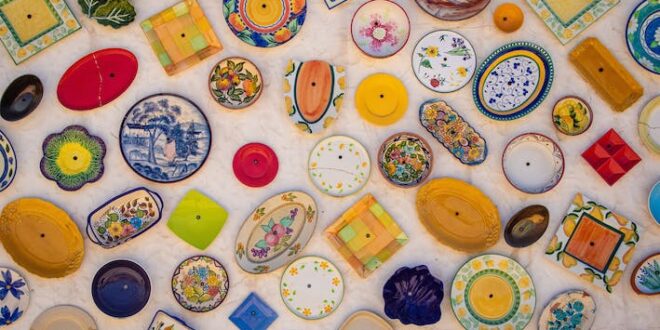You haven’t reached retirement without collecting or inheriting a few dinner sets, and that’s a fact! What’s more, most of us still have them (or what remains of them) in our kitchen cupboards. Along with the Bunnykins bowls and cups our own children used, the accumulated birthday mugs from grandies, and the antique or op-shop ‘treasures’ we just couldn’t pass up, our homes are clogged with china. So much so, when we actually want to find what we’re in urgent need of (the crystal trifle bowl on Christmas day, is a classic example), we have to unpack everything onto the bench before we can reach it. So, whether you’re thinking of downsizing, or simply want to unclutter your kitchen to make life simpler, here are some tips on how to say “sayōnara” to some seriously superfluous dishes!
Match – don’t mix!
When downsizing, think more about what new crockery you will purchase than about what existing crockery you will keep (we’ll discuss how to fund that, shortly). A two to three person household will happily manage on no more than two 5 piece dinner sets (having two allows for waiting until the dishwasher is full before turning it on). If you don’t already have two identical dinner sets, invest in them. That way, your crockery will always match, even when setting the table for extras. When choosing your identical dinner sets, choose a style where the bowls are suitable for both soup and dessert (so you have only ten, rather than twenty bowls to store!). And where the cups will work for both tea and coffee.
If you choose simple white crockery, it will go with everything (which cuts down on the number of tablecloths you need). Keep you ‘nibbles’ and serving bowls white, too (or at least clear glass), so everything matches.
When it comes to drinking glasses, choose ones robust enough for everyday use, while also being elegant enough for entertaining (they should be able to accommodate water and juice, as well as a spirit or a beer). Opt for universal wine glasses (the generally accepted ‘universal wine glass’ is a stem with a ‘medium bowl,’ but if you are unsure, talk to a sommelier at your local fine wine outlet). As with your dinner sets, double up, but no more, on each style of glasswear.
What about me?
Sentimentality is the biggest block to downsizing, but when it comes to crockery, there’s plenty of reason not to let that get in your way. Sentimentality extends beyond ourselves, to those we love. Quit your precious pieces by offering them to family who will hold them in the same regard. Your own kids will delight in having their baby cup and plate in their own cupboards. Gift to friends, pieces of china they have admired over the years (a cup, saucer, and plate trio, for example). Pick up a picnic basket from an op-shop, and make up picnic sets from your giveaway crockery for the young families in your whānau. Wrap heirloom dishes in gorgeous tissue, and give them as birthday and Christmas gifts. Wait until your local school or club is having a market day, and donate your surplus crockery to the sale.
When it comes to an excess of treasured mugs given by grandies, find new uses for these items, around the home (they can be used as washing powder or flour scoops, for storing nails and screws, as bird feeders, pen holders, or for growing succulents). Alternatively, pop them away until you are sure there will be no awkward enquiries, then deliver them to the op-shop.
Finance your new crockery and glass purchases with a garden gate ‘garage sale,’ or sell items on the likes of Facebook Marketplace or Trade Me (February, when students are returning to uni, is a great time to do this). If you have special pieces, take them to an antique shop where you may be able to get more for them.
Don’t make the mistake of thinking you have to keep every item of crockery in the cupboard – less is best in so many ways!










Join the Discussion
Type out your comment here:
You must be logged in to post a comment.